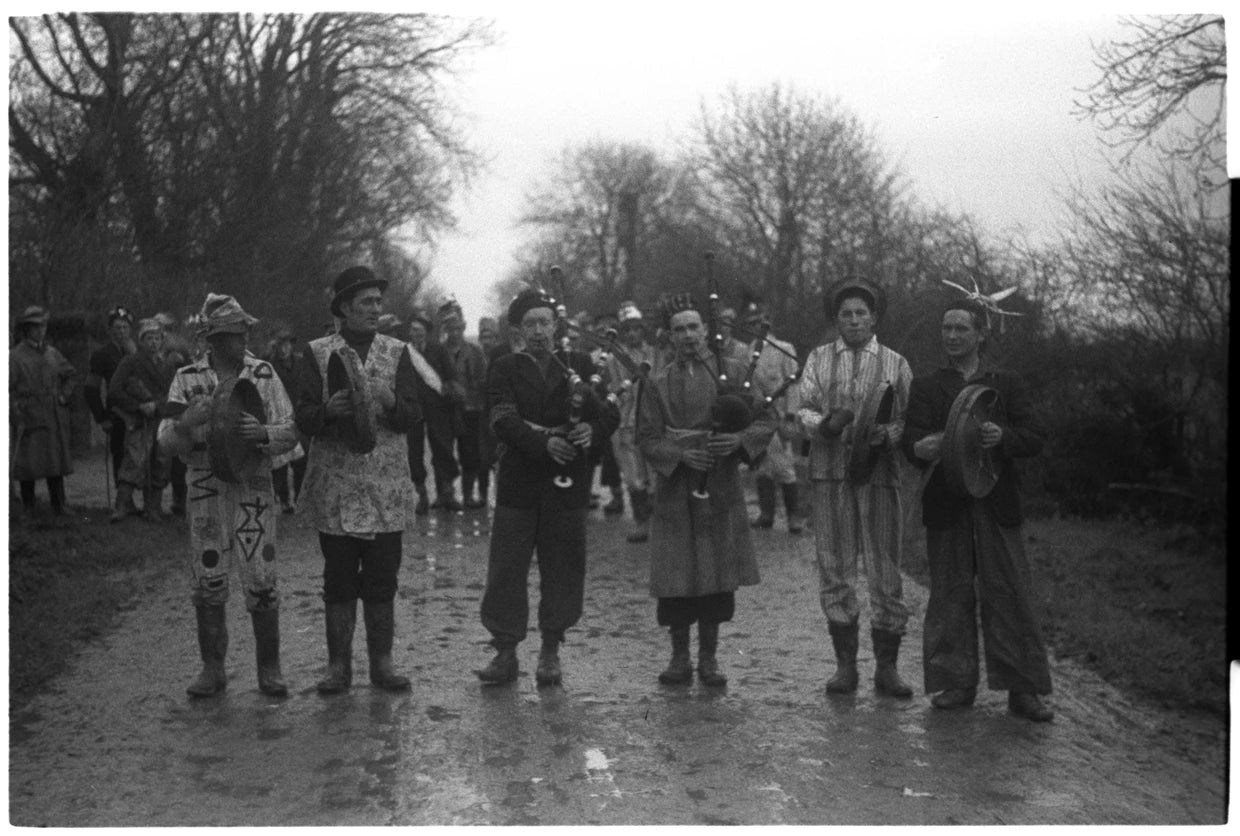
The Athea Wren Boys Bagpipers - 1940’s
The Athea Wren Boys of the 1940s were a lively part of the St. Stephen's Day tradition in West Limerick. Every year, groups of local boys would go from house to house, dressed in old clothes, singing, playing music, and collecting donations for their performance. This tradition, known as “Wren Day,” was common throughout Ireland, but what made the Athea group unique was the inclusion of two bagpipers who accompanied them during this time.

The 2 bagpipers with the Athea Wren Boys in 1947. The name of the Piper on the left is Colm Danaher.
It's unclear if these bagpipers were from Athea or another nearby village. There was no record of a formal pipe band in the town, so the musicians may have come from other towns in the area to join the Wren Boys. The presence of bagpipers, however, was a special touch, adding a deeper connection to traditional Irish music during the celebrations.

image of the Wren Boys performing with bagpipes.
The Athea Wren Boys, with their pipers, brought a distinct energy to the streets. As they went from home to home, their music became an important part of the local culture. Even though the details of the pipers' origins remain uncertain, their contribution to the Athea Wren Boys of the 1940s left a lasting impression on the community's rich history.

Wren boys marching through the town on St. Stephen’s Day, 1940’s (Athea).
This tradition, like many in rural Ireland, has evolved over time, but the memory of those two pipers playing with the Athea Wren Boys is still part of the local lore. It’s a reminder of the importance of Bagpiping music in Irish culture, especially in towns like Athea, where traditions were kept alive through community effort and shared joy.
If you want to learn more about other Irish traditions and the history of bagpiping, make sure to explore our blog further.






Leave a comment